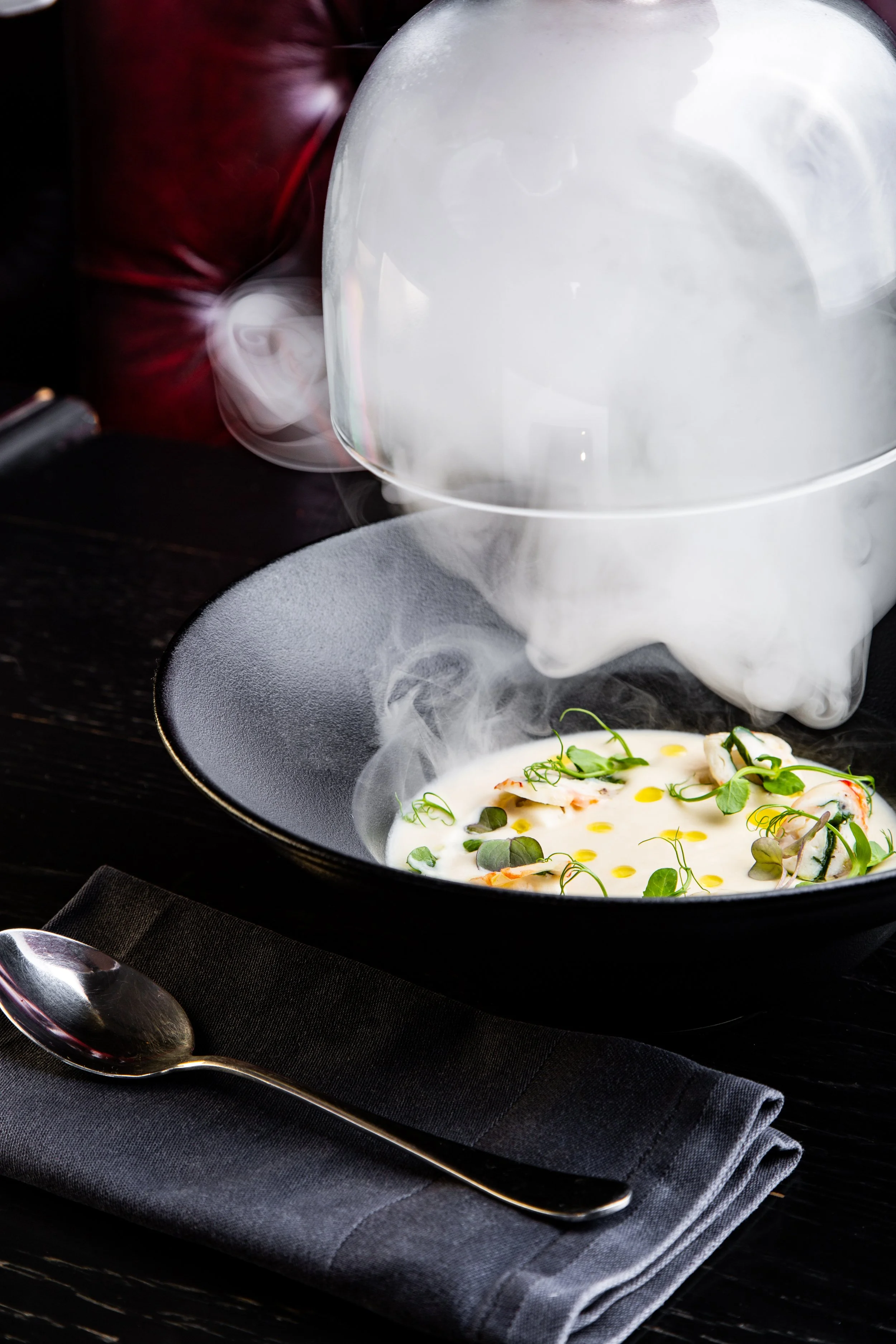Smoke, sap and meadow: unlocking nature’s flavour library
/Often we think of wood in food simply as via smoking. Let’s explore a deeper understanding of wood, bark and hay in food.
In fact each type of wood has a distinct flavour profile. When chefs bring wood into the kitchen whether by smoke, char, infusion or slow ageing, they are unlocking the forest’s pantry.
The Chemistry of Trees and Grasses
Inside every stick of wood or straw is a natural laboratory:
Cellulose & Hemicellulose (60 per cent of dry wood): break down into caramel, malt and toasted sugar notes as they pyrolyse from 150°C upwards.
Lignin (20 per cent): decomposes into phenols, guaiacol, eugenol and vanillin responsible for smoke’s spice, clove and vanilla undertones.
Extractives & Terpenes (5–10 per cent): highly species-specific. Juniper’s α-pinene gives piney citrus. Paperbark’s eucalyptol lends a cool mentholic lift. Fruitwoods carry malic esters that smell of orchard fruit.
Coumarin in Hay: a natural benzopyrone that reads as sweet hay, tonka bean and soft almond, blossoming when gently toasted.
Temperature is everything. At 150°C sugars caramelise. Push past 250°C and lignin yields smoky syringol and spicy guaiacol. Control of heat low smoulder, hot flame or gentle warm infusion decides whether you taste meadow honey or campfire.
Sensory Flavour Mapping the Woods
| Botanical Source | Dominant Compounds | Sensory Palette | Culinary Resonance |
|---|---|---|---|
| Apple & Pear | Malic esters, vanillin | Sweet orchard fruit, light caramel | Cold-smoked butter, bread proofed over warm embers |
| Cherry | Benzaldehyde, phenols | Almond, black cherry | Duck or pork, chocolate desserts |
| Oak (French vs American) | Lactones, vanillin | Coconut, vanilla, toast | Barrel-aged sauces, cream infusions |
| Ironbark / Red Gum (Australian) | Dense phenolics | Deep earthy smoke, coffee edge | Slow barbecue, native pepper sauces |
| Cedar / Juniper | α-Pinene, limonene | Pine, citrus, resin | Cedar-plank salmon, butter infusions |
| Paperbark (Melaleuca) | Eucalyptol, cineole | Herbal, cool eucalyptus | Steam-wrapped fish, root vegetables |
| Hay / Straw | Coumarin, caramelised sugars | Sweet grass, tea, almond | Hay ice cream, hay-baked lamb |
| Grape Vines & Wine Barrel Staves | Tannins, fruity esters | Red fruit, subtle toast | Cheese smoking, lamb or shellfish |
Beyond the Smoker: Techniques
Hot Smoke – high heat, fast phenolic release; strong, lingering base notes.
Cold Smoke – sub-30°C, slow volatilisation; delicate top and heart notes ideal for butter or cream.
Direct Charring – plank cooking or burning hay under cloches; instant caramelisation and dramatic tableside aroma.
Infusion and Fat-Washing – steep toasted chips or hay in cream, stock, oil or spirits; pulls terpenes without phenolic heaviness.
Aging and Storage – butter or cheese aged with hay or oak; slow migration of aroma molecules.
Ferment and Brine – add toasted wood to pickling brine for layered lactic-fermented depth.
Six Chef-Ready Ideas
Paperbark-Baked Barramundi with Lemon Myrtle Brown Butter
Moist, aromatic steam; cineole and lemon myrtle oils create a uniquely Australian perfume.Toasted Hay Ice Cream
Pan-toast hay to a nut-brown crackle, steep in milk overnight, then churn. Almond-grass notes meet vanilla.Apple-Wood Levain Bread
Proof sourdough in a warm smoker with apple wood embers. Soft fruit and caramel echo through the crumb.Oak-Aged Cream Reduction for Beef or Mushrooms
Charred French oak staves submerged in cream impart subtle vanilla and coconut before reduction.Cherry Wood-Smoked Duck with Black Cherry Jus
Benzaldehyde in cherry wood mirrors the sauce, making the dish taste whole.Cedar-Smoked Cultured Butter with Native Pepper
Cold-smoke cultured butter, fold in native mountain pepper and serve with warm rye.













